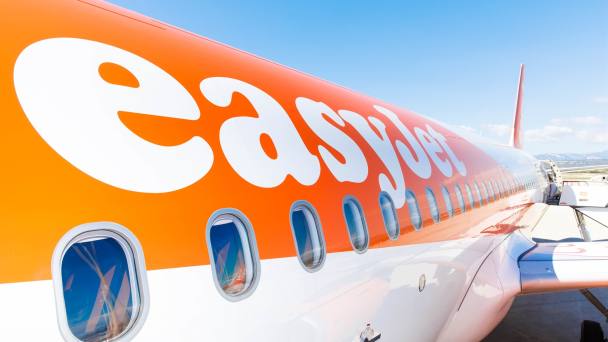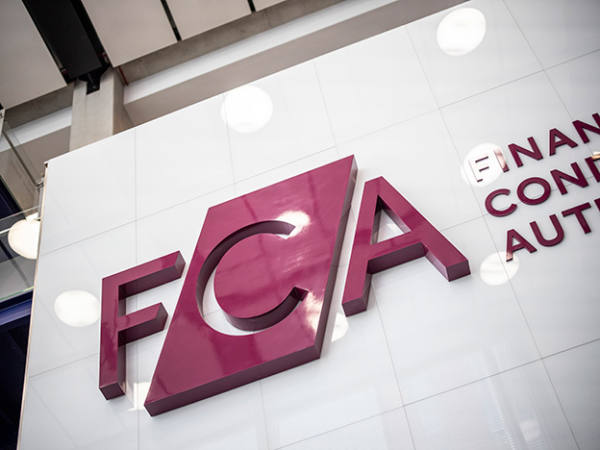EasyJet (EZJ) chief executive Johan Lundgren hailed a “£1bn bounce back” on the publication of the airline’s full-year results last month, referring to a £1.1bn swing in ‘Ebitdar’ – the profitability metric favoured by the company, which not only strips out interest, tax, depreciation and amortisation, but also plane leasing costs – to £569mn.
- Well-placed at key hubs
- More efficient fleet
- High-margin holiday arm
- Strong balance sheet
- Recovery lags peers
- Fuel costs remain elevated
- Capex set to soar
This certainly isn't a metric that investors should build a case around. At a statutory level, easyJet posted a pre-tax loss of £178mn in the year to 30 September.
Yet tracking Ebitdar over the course of last year at least demonstrates easyJet's progress. Disruption caused by the Omicron variant during the 2021-22 winter, saw the company report an Ebitdar loss of £208mn in the six months to March. By the third quarter, it generated £103mn in Ebitdar and in the fourth quarter a record £674mn as the company continued to increase both the number of planes and passengers flown.
Holding pattern
Although low-cost carriers in Europe have enjoyed a more robust restart than many other parts of the industry – intra-European air travel was at 86 per cent of pre-pandemic levels by November, according to Eurocontrol, while global air traffic remains at about 71 per cent – progress has hardly been smooth.
Severe staff shortages led to some airports placing caps on flights to restrict passenger numbers. EasyJet was hit harder than most, given that curbs were put in place at two of its main hubs – London Gatwick and Amsterdam Schiphol. And while most airports have now lifted restrictions, they remain in place at Schiphol until next March.
The airline also struggled to build its own capacity in a tight labour market and incurred £133mn of “disruption costs” in the third quarter, as it compensated passengers for delayed or cancelled flights.
As a result, the airline's "bounce back" hasn't been as convincing as some of its peers. The 46.3mn passengers carried in the six months to September was 15 per cent lower than in the same period in 2019. By contrast, Ryanair (IE:RYA) carried 11 per cent more passengers than in the same period in 2019. Wizz (WIZZ), meanwhile, carried 20 per cent more – due in part to a huge (and costly) expansion.
Lundgren told investors last month that its capacity will expand by 15 per cent this financial year, returning to pre-pandemic levels by the fourth quarter. As it grows beyond this level over the next few years, it aims to do so more efficiently, by replacing about 40 per cent of the 94 Airbus A319 planes it currently has in service over the next three years with newer A320neo and A321neo models. An A321neo can carry around 50 per cent more passengers than an A319 and burns roughly the same amount of fuel, while an A320 can increase passenger capacity by a fifth.
This will help to address a key analyst concern with easyJet – that for a low-cost carrier, its costs aren’t low enough. The airline’s unit cost per seat (excluding fuel) was £52.66 last year, compared with €30 (£26.20) for Ryanair.
Fuel costs, of course, remain elevated, but other than hedge its exposure there is little it can do. Fortunately, 74 per cent of its fuel requirements to March and 51 per cent to next September are hedged at prices that are below the current European spot rate of $950 (£786) per metric tonne.
Seating surcharge
There’s no doubt that the addition of new planes will increase costs in the short term, though. With 51 new planes due to join the fleet over the next three years, easyJet is forecasting an increase in capital expenditure from £900mn this year to £1.5bn next and £1.6bn in its 2025 financial year.
Higher costs are one reason why analysts at Bank of America expect the stock to underperform the sector. They estimate the airline’s unit costs (excluding fuel) per seat will be 20 per cent higher this financial year than they were in 2019, and are concerned by the effects of an expected six-quarter economic contraction in the UK, easyJet’s key market.
The cost argument needs to be put into perspective, though. Much of easyJet’s operations are from “slot-constrained” airports, such as Gatwick, Schiphol and Lisbon, at which operating costs are higher than smaller airports. Lundgren told analysts last month that easyJet has “a significant cost advantage” against both legacy airlines and low-cost peers at such locations. “A five-plane operation from Wizz can’t compete with our 80-plane operation from Gatwick from a cost point of view,” he said.
Moreover, these locations allow the company to charge a premium. In the three months to September, easyJet’s average ticket revenue per passenger was €91.40, compared with €57.40 for Ryanair and €55.30 for Wizz, according to Gridpoint Consulting.
Landing fees
EasyJet is also making more from ancillary revenues – charging for bag drops, airport transfers and so on. It generated £1.59bn-worth of these extras last year, a 59 per cent increase on pre-pandemic levels. A partnership with airline software specialist Datalex will help boost this further, by providing bundles of services to respond quickly to demand, as well as personalised offers that can generate higher yields, Lundgren said.
One of the biggest profit drivers could prove to be its holidays arm, though.
Although easyJet’s a late arrival in this field – Jet2 (JET2) and British Airways have had associated holiday offers for years – margins outstripped peers’ last year.
In its first full year of uninterrupted operations, easyJet's holidays arm generated a £35mn profit on £386mn of incremental revenue, from 1.1mn customers. It is already “well on the way” to delivering a medium-term pre-tax profit target of £100mn from UK-based customers, and other markets will soon be targeted.
The division has few overheads and 95 per cent of its cost base is variable. EasyJet already flies 3.1mn passengers on behalf of other tour operators, but it has the advantage of a “captive airline audience”, which the airline believes should help reduce its marketing spend. And although it might not have the cost profile of a Ryanair or Wizz, easyJet has a better reputation, according to YouGov, which presumably means customers would be more willing to book a holiday through the airline.
Whether this will be enough to pull investors into the recovery story is hard to say. Tapping the stock market on numerous occasions for funding means easyJet shares have fallen in value by almost 75 per cent since the onset of the pandemic, but its balance sheet remains robust. Net debt stood at less than £700mn at September, and it is one of just two European airlines (along with Ryanair) to retain an investment-grade rating.
EasyJet's share price does not fully reflect the structural improvements the business has made, such as greater use of a seasonal pilots’ contract that will make some routes more profitable, Liberum analyst Gerald Khoo said in a recent note.
The onus is now on easyJet to meet FactSet-compiled consensus earnings forecasts of 52p a share by FY2025 as the larger, more efficient planes come into service. If these estimates are reasonable, two smoother years in the execution of its strategy could augur a significant share price re-rating.
While concerns about the UK economy are valid, easyJet could be a net beneficiary of travellers trading down from more exotic, longer-haul destinations. So long as it can avoid fresh pandemic-related disruption and keep improving revenue, its more efficient business model should mean it generates excess profits. If it achieves this, expect the company’s shares to break clear from pandemic-related turbulence.
| Company Details | Name | Mkt Cap | Price | 52-Wk Hi/Lo |
| easyJet (EZJ) | £2.62bn | 346p | 729p / 277p | |
| Size/Debt | NAV per share* | Net Cash / Debt(-) | Net Debt / Ebitda | Op Cash/ Ebitda |
| 335p | -£666m | 1.2 x | 99% |
| Valuation | Fwd PE (+12mths) | Fwd DY (+12mths) | FCF yld (+12mths) | EV/Sales |
| 14 | 0.7% | -3.3% | 0.6 | |
| Quality/ Growth | Current ratio | Asset turn | 5yr Sales CAGR | 5yr ROE |
| 1.3 | 0.6 | 2.7% | -13.1% | |
| Forecasts/ Momentum | Fwd EPS grth NTM | Fwd EPS grth STM | 3-mth Mom | 3-mth Fwd EPS change% |
| - | 66% | 1.3% | -22.6% |
| Year End 30 Sep | Sales (£bn) | Profit before tax (£bn) | EPS (p) | DPS (p) |
| 2020 | 3.01 | -0.84 | -150 | nil |
| 2021 | 1.46 | -1.14 | -167 | nil |
| 2022 | 5.77 | -0.18 | -20 | nil |
| f'cst 2023 | 7.48 | 0.20 | 21 | 0.84 |
| f'cst 2024 | 8.35 | 0.35 | 38 | 8.37 |
| chg (%) | +12 | +75 | +81 | +896 |
| Source: FactSet, adjusted PTP and EPS figures | ||||
| NTM = Next Twelve Months | ||||
| STM = Second Twelve Months (i.e. one year from now) | ||||









